 Having a great idea for a story is one thing, turning that idea into a book that people want to read all the way to the end is something else. Countless books end up as DNF (did not finish) and attract poor reviews because the author couldn’t keep their readers interested enough in what was happening for them to stay the course and finish the book. And a book that ends up as DNF means that its reader won’t buy the author’s next book. Then you have the books that readers did finish but didn't like, which also attract poor reviews. So, 10 simple tips to make sure your book doesn’t share that DNF fate and attracts good reviews. They aren’t complicated, but they do need to be at the forefront of the author’s mind as they write.  1. Invest time in your character building People engage with characters, not plots, so the characters are the most important part of writing. A good protagonist (or MC if you prefer) isn’t what is visible from the outside. It is what is on the inside that counts. We may be attracted to a person by their looks and style, but we fall in love with them because of who they really are, even making allowances for their flaws. In real life we don't fall in love with shallow people, so why would we do it in books? Create a pen picture for all your major characters. Start by giving you character a back story, beginning with their family and home life, through their education, their peer groups and their life experiences. These things shape their values and beliefs and those are the things that direct their behaviour. Your character has to behave consistently, in accordance with their values and beliefs. They may be forced by circumstances to “act out of character” at times, but that always creates a dilemma for them and is a source of internal conflict (see below). Above all give them emotions, so that readers feel those emotions and reflect them in their reading experience. If your character is moved to tears, your readers should be moved to tears too. If your character is laughing, your reader should also be laughing. You may not use a lot of the material that you generate in your pen pictures, but knowing how characters will behave in any particular set of circumstance means they can behave consistently over a lengthy story.  2. Create a meaningful conflict. Character + conflict = plot. The conflict that faces your protagonist is what the story is all about. No matter what the conflict is, they have to resolve it by the final page in order to complete the story and fulfil the destiny you create for them. Conflicts come in many different disguises and will depend very much on the genre in which you write. It can be the character’s internal struggle to overcome their own demons, or it can be an external struggle to overcome actual demons. Every story, even a comedy, is about overcoming conflict. But whatever the conflict is, it has to be of interest to the reader, so it has to be larger than life and something that readers are unlikely to experience for themselves, which makes it interesting for them  3. Create a meaningful consequence Failure to resolve the conflict has to have consequences, otherwise it is hard to inject drama into the story. The more severe the conflict, the greater must be the consequences of failure. In romance, failure may end with a broken heart. In a court room drama failure may end in imprisonment or financial ruin. In action adventure the consequence of failure is almost always death and/or destruction. Whatever the consequence, it has to match up with the reader’s own fears because that is what will keep the reader turning the page. Even though the reader knows the story will probably have a good outcome for the protagonist, that element of doubt is what keeps them reading, because they have to know how the protagonist avoids the consequences.  4. Motivate your character. In a story, as in real life, the protagonist has a choice whether or not to get involved with the conflict. A hero isn’t a hero because they are brave. A hero is a hero because they choose to run towards trouble when other people are running away from it. This means that the protagonist has to have a reason to get involved and this is where their values and beliefs come in. On the other hand they can’t get involved because they are compelled to by some outside agency. In other words, it can’t be just about the job they do. There must be an opportunity to walk away early in the story and even later in the story when things get difficult. Take a typical private investigator story. The PI gets involved initially because they have been hired to do so, but they can also turn the case away if they wish. They don’t know at that stage that their life may be threatened. Later, however, they find that their life is on the line if they continue the investigation, so they can choose to walk away. Why they don’t walk away is because of their motivation, not because they are being paid. The motivation has to be believable, and it must fit in with the character you described in your pen picture.  5. Invest time in creating your villain Authors often spend a lot of time building good protagonists, only to let themselves down with their antagonist. Nobody is born bad, so there must be a reason for them becoming the person they are. It doesn’t matter the genre, your villain has to have his or her own back story which explains their behaviour. Just as with your protagonist, you may not use all the material you generate in developing your antagonist, but if you understand them it will add depth to your plot and your readers will understand them.  6. Create smaller conflicts to add complexity and drama. Sub plots are what turns a short story into a full length novel and those sub-plots are created with small conflicts that get in the way of your protagonist dealing with the big conflict. Imagine our PI, mentioned above, who owes money to a loan shark, who wants his money back. The PI spends time during the story dodging the loan shark, trying to raise the money to pay him back etc then, just as the PI is about to solve the case and confront the villain, they are snatched off the street by the loan shark and are threatened with dire consequences if the money isn’t forthcoming within the hour. There is several chapters worth of drama available in that short paragraph. Sub-plots are also a great way to put your minor characters centre stage for a while as they try to help the protagonist deal with the minor conflicts so the protagonist can get on with dealing with the major conflict. This is what injects "pace" into a story; the peaks and troughs in the action that keep the reader turning the page to find out what happens next. However, the sub-plots and the main plot must interact with each other. If the sub-plot has no impact on the outcome of the main conflict it is redundant, and the reader ends up saying “what was that all about?”, which is not a good thing.  7. Do your research This applies to any genre but is particularly important when it comes to specialist settings such as police, medical or legal dramas and historical fiction. Readers of that sort of fiction know their stuff and they expect their authors to know their stuff as well. I’ll give you a real life example. I recently read a book set during World War II. The first third of the book was set against the backdrop of an RAF Lancaster bomber squadron. It became quite clear that the author knew nothing about the RAF. He had researched the Lancaster bomber and knew quite a bit about that (but not as much as he should have known), but he was clueless about the RAF in general. As I’m a former member of the RAF he had me wanting to throw my Kindle at the wall in frustration at the gaffs he committed, and he completely undermined his credibility as an author writing about that period. Needless to say, the book ended up as DNF. What made it worse was that most of what he needed to know he could have found on the internet and the rest from one of the several standard works about the RAF during WW2. The golden rule is always “write what you know”. As that is a bit limiting the next best thing is to work out what you don’t know and learn about it. Learn everything about it. Like character development, you may not use everything you learn, but at least you won’t make the sorts of gaffs the above author made, your credibility will be retained and your story will be more authentic. It’s easy to say “Readers probably won’t know that, so I won’t bother researching it” – but some readers will know it and they are the ones who will write the bad reviews of your book.  8. Don’t show off. This includes using multi-syllable words when single syllable words will do and using technical, scientific or jargon words that readers won’t understand, or including unnecessary detail just to prove you’ve done your research. Your readers don’t want to have to read your book while holding a dictionary in one hand and an encyclopaedia in the other. So, use language that the average reader will understand, even if you know all the technical or scientific terms yourself. There will be times when you need to use those terms, in context, but make sure that you provide your readers with an explanation so that they will understand it too. You can have the protagonist or another character acting in place of the reader and have the “expert” explain what they mean in simple language, for that character’s (and the reader’s) benefit. This is often done in cop shows where the Forensic Medical Examiner has to explain post-mortem results in terms the lay person (the viewer) will understand.  9. Know the ending before you start. If you know how your story is going to end, you can construct a “road map” that will take your protagonist to their destination. One of the biggest problem for “pantsers”, as some authors are called, is that in not having a map to follow, they get side-tracked, which is confusing for the reader and it is hard for the author to get the plot back on track because they have confused themselves. It is OK to deviate from the map, but if you don’t have a map to start with you won’t know if you are deviating from it.  10. Write for your readers. Many authors are advised to “Write for yourself first” and that is OK if all you want to do is write. But if you want to write a best-seller, you have to write for your readers. You have to know what they want and what they expect, and you have to fulfil their wants and expectations. If you do that your book will get good reviews, which will mean it sells more copies. But if you don’t meet those wants and expectations, you can only expect bad reviews, which will stop sales in their tracks. What the readers want and expect will vary from genre to genre, so you have to understand your genre inside out, and that means reading books in that genre. Read the best-selling authors in that genre to learn from the best. Once you have established yourself as a best-selling author, you can then “write for yourself” in the certain knowledge that your name will sell the book. But you have to cross that bridge when you reach it, not when you are just starting your journey.  And Finally Nobody can guarantee that your book will be a best-seller. But if you follow the advice above, you will stand a better chance than those authors that don’t follow the advice. But if there is a key to success it is in the first three tips. Character, conflict and consequences. They are what make up the vital elements of the story. At least get those right and you are well on your way to writing a best-selling novel. Now that you have read this blog, why not take a look at our books to see if our authors have followed the advice that we have offered? Just click on the “Books” tab to see their work. If you have enjoyed this blog, or found it informative, then make sure you don’t miss future editions. Just click on the button below to sign up for our newsletter. We’ll even send you a free ebook for doing so.
0 Comments
 As an Indie author, are you ready for Christmas? This is one of the best times of the year for books sales, because books make such a great gift. But, just like any other time of the year, your potential readers need to know about your book and how it is going to be the perfect gift for their loved one or friend. If you use Amazon Ads, then now is the time to launch a “keyword” ad aimed specifically at the Christmas market. There are two steps to this. Firstly, find the books by other authors that are like yours and use their titles and the authors' names as keywords in your ad.  Secondly, add in suitable keywords so that people searching for Christmas gifts also find the book. The most efficient way to do this is to add the words Christmas, festive, seasonal, holidays (if you are American) and similar to other keywords you may use that are related to your book and its genre. For example, Christmas books, Christmas novels, Christmas romance. Christmas mystery etc. If you are a stranger to Amazon Ads, then their tutorials are the place to start finding out more and learn about their power to improve your sales. But Amazon is only one place where you should be promoting your books for the Christmas season. If you are on Facebook, X/Twitter, Linkedin or Pinterest, you should be scheduling posts specifically aimed at the Christmas market.  People are desperate for ideas for gifts to give, so they will appreciate you giving them helpful suggestions. Make sure you include some of those keywords in your posts, so that they show up in searches. Also use hashtags for added searchability. You might also consider setting up some book bundles for readers to buy. This is particularly relevant if you write series and you can bundle 3 or 4 books from the series. By offering a reduced price compared to buying the books individually, you can increase your sales, which increases your income.  If you have your own website where people can buy your books directly from you, then setting up “buy one get one free” (aka BOGOF) offers will also give your books a boost. Everyone loves a bargain and being able to buy two gifts for the price of one is always a winner. Black Friday is 24th November and Cyber Monday is on 27th November and both those days should also be targeted for sales. But you must offer deals on those days, or people won’t buy. 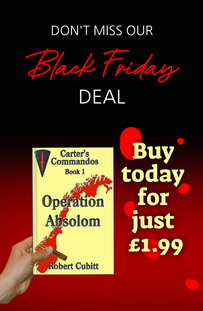 If you have access to graphics packages such as Canva or BookBrush, use their templates to set up some seasonally themed mock ups for your books. Putting your book cover on your social media is OK but, psychologically, displaying it in a Christmas setting is another nudge towards the “buy” button. Making it clear that price is reduced for Black Friday is another nudge. But remember, you aren’t selling your book direct to the reader, you are selling it to a friend or loved one. So the text that accompanies your promotion has to be about how somebody else will love the book. So, a phrase such as “The golfer in your life will love this book” is more appealing that just telling the viewer that your book is about golf. 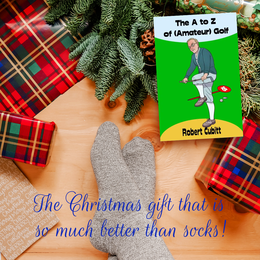 The key to extra sales isn’t about promoting your book once and hoping for the best, it is about promoting your book continually throughout the season. Most social media sites have rules about spam, but if you vary the images and the text you will get away with it, as each post will appear unique. But the Christmas selling season doesn’t end on 25th December.  A lot of people get gift vouchers for Amazon and for other etailing sites, so set up another series of promotions and post them starting on 25th December and running through to the New Year, because that is when people will be going on-line searching for things to buy with those vouchers. Make sure it is your book or books they buy! And, if you are looking for some great book ideas to buy for your friends and loved ones, then you might want to take a look at the ones we have to offer. Just click here to take a look at our catalogue. If you have enjoyed this blog, or found it informative, then make sure you don’t miss future editions. Just click on the button below to sign up for our newsletter. We’ll even send you a free ebook for doing so. Disclaimer: The views expressed in this book review are those of the review's author and are not necessarily those of Selfishgenie Publishing. 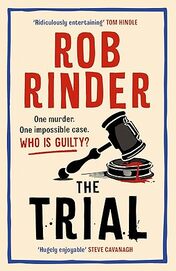 “The Trial” is Rob Rinder’s first foray into fiction and it’s one that will keep you guessing all the way to the big reveal. For those outside the UK who are unfamiliar with Rob Rinder, he is our equivalent to “Judge Judy”. As a successful barrister (trial lawyer for our overseas readers) he was well known in legal circles before venturing onto our TV screens. Now he appears in a variety of shows in different formats, including documentaries. With this foray into fiction, he becomes not only Britain’s Judge Judy, but also Britain’s John Grisham. The story is basically a courtroom drama, but one with a strong human element. Unusually, it doesn’t follow the exploits of an experienced lawyer plying his trade against all odds, but instead the protagonist is a novice, stumbling through the foothills of the legal mountain range as he learns his trade while flirting with the ruination of his career before it even gets started. Adam Green is a law graduate from Oxford University who is the second 6 month of his yearlong pupillage – the basic training for a barrister where he is supposed to be mentored by a King’s Counsel in a prestigious “chambers”, as legal businesses are called in the UK. If Adam performs well he will be offered a “tenancy”, which is basically a full time job in the firm. But there is only one position available at the end of the year and he has a rival with whom he must compete, the attractive and outgoing Georgina. Adam is very much an introvert to Georgina’s extrovert, and she isn’t afraid to use her gender to charm her male colleagues. Adam, while being a very likeable person, usually comes across as socially inept, which is very much a disadvantage in the British legal profession. I frequently found myself wondering how much of Rob Rinder there was in the character of Adam. For the uninitiated (like me) there is a lot of arcane terminology to get your head around that has nothing to do with the law itself, but everything to do with the ancient traditions of the legal profession as practised in the UK. Several hundred years of custom and practice have created a world that is closed to the outsider, but for which Rob Rinder raises a corner of a curtain to allow us to peek inside. "a national hero who once saved the life of the Queen." For example, did you know that barristers never shake hands with other barristers? No, nor did I. It has something to do with barristers trusting each other and not needing to shake hands in order to prove their hands are empty of weapons. Who knew? Stag Chambers, the place where Adam is a pupil, is asked to defend a man accused of murdering a police officer. Not just any police officer, however, a national hero who once saved the life of the Queen. "a deeply unlikeable person who has little time for young whippersnappers like Adam" It is an open and shut case, to all intents and purposes and Jonathon Taylor-Cameron, Adam’s pupil-master (mentor) considered it beneath him to attempt to mount a defence. But legal traditions dictate that he can’t turn the case down and Adam is assigned as his “junior”, or assistant. Which means Adam does the hard work of preparing the case while Jonathon does the grandstanding on the courtroom floor. Needless to say, Taylor-Cameron is painted as a deeply unlikeable person who has little time for young whippersnappers like Adam, creating a major source of conflict within the plot. "A reasonable doubt is all that is required to obtain an acquittal." Adam soon starts to believe that their client, Jimmy Knight, is innocent but the evidence is stacked against him. The big question throughout the book is whether Adam can find the evidence that will get their client acquitted, or at least cast doubt on the evidence provided by the prosecution, so that a reasonable doubt is created in the minds of the jury. A reasonable doubt is all that is required to obtain an acquittal. Obviously, I can’t say much more than that, because it would spoil the book. But I can say that there are so many secrets to be exposed that Adam has his work cut out to make sense of it all. And just to add a bit of extra drama, if he doesn’t make a good job of the defence, it is unlikely that he will be offered the permanent position at Stag Chambers.  Author Robert Rinder Author Robert Rinder Rinder’s writing style is easy to read, and he makes some complex subjects easy to understand. His knowledge of the British legal system is obvious, and he does his best to make sure that readers can understand it as well. I found myself turning the pages in anticipation of the next twist the plot might take and what new secrets would be exposed. There are red herrings aplenty, but the truth is there to be discovered if you can pick up on the subtle clues that Rinder drops into the narrative. But there are also a few lessons to be learned about the morality of the legal system and it becomes quite clear that justice is often not what is done, but what is seen to be done. You would think the legal system is there to establish guilt or innocence, but those concepts seem to slip between the cracks when it comes to what can be proved and what can’t. If you like legal dramas, then I highly recommend you give this one a go. “The Trial” by Rob Rinder is an absorbing read which left me wanting to read Rinder’s next book (assuming there is one) straight away. If you have enjoyed this blog, or found it informative, then make sure you don’t miss future editions. Just click on the button below to sign up for our newsletter. We’ll even send you a free ebook for doing so. 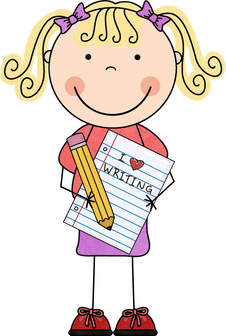 There was a recent kerfuffle amongst Indie authors on X/Twitter when a well-known, trad published, author (I won’t name her, the posts are all there if you want to look) suggested that Indie authors take the “easy route” by self-publishing. She actually said it on Instagram or TikTok, or one of those platforms, but the kerfuffle was on X/Twitter. Naturally, this is not a view we share. And we are pretty sure that it isn’t true anyway. I know for a fact that Selfishgenie Publishing wasn’t the first choice for any of our authors. Nor were we their second choice, or their third. In fact, if we made it into their top 100 choices we would feel quite proud. Those authors came to us because they felt they had nowhere else to go. It most certainly wasn’t an easy choice for them to make, we know that. Our authors came to us for three reasons:  1. We were willing to give them a chance. 2. We were able to provide skills that they didn't have. 3. Unlike vanity publishers, we didn’t make any upfront charges for our services. Now, you may be wondering why, as publishers, we lump ourselves in with Indie authors. It is because that in many ways we function in exactly the same way as the indie author functions. We may be publishers, but we are also authors ourselves. Our company exists because we started doing for other people what we were already doing for ourselves. And, just like many other indie authors, self-publishing wasn’t our first choice. But it wasn’t really a choice we made for ourselves anyway. It was made for us by others. For many self-pubbed authors, there is a three step process. Let’s just go through it to see if it rings any bells.  Step One – Querying. Sending out queries to agent after agent and getting knocked back every time. How many letters are sent and over what time scale varies from author to author, depending on their resilience. But in the end the author finally admits that it isn’t going to happen for them and stops sending out query letters. The decision to do that isn’t one the author makes voluntarily. The author has just come to the realisation that none of these agents are going to offer to sign them, so it isn’t actually a decision at all.  Step Two – Pitching to smaller publishers. There are some smaller publishers that accept submissions direct from the author, not via an agent (they do accept submissions via agents as well, of course). After working through the lists of publishers who will accept those submissions and once again getting knocked back every time, the author once again realises that those publishers aren’t going to sign them. Again, the decision isn’t really being made by the author. It is being made by the publisher. The author is just accepting the reality of their position. Let’s face, getting a trad publishing deal is a numbers game. Using the old iceberg analogy, it is only the authors that represent the tip of the iceberg that get a publishing deal. The vast majority that sit below the waterline don’t get one. They are probably around 95% of all authors writing today. They can’t all be bad. In fact most of them are pretty good. 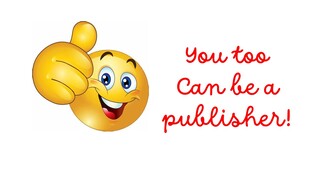 Step Three – Self Publishing. When the author decides to self-publish, they are making a choice. The alternative is not to publish their work at all and, sadly, some authors do make that decision. Their talent will be forever lost to readers simply because they are worn out from trying. So, what part of steps one and two were easy, do you think? Is it easy to get rejection after rejection? No, it isn’t. Every rejection feels like a dagger through the heart. Is it easy to get back on the horse and try again, and again, and again? No, it isn’t. Yet we kept sending out those queries, even though we knew we would get more stab wounds.  The author who thinks it is easy to go self-pubbed is speaking from a highly privileged position. They got their agent before their resilience ran out. They got their publishing contract. Every time they submit a new MS to their agent, they know that the agent is very likely to go into raptures of appreciation for it, because they know that another pay-day is approaching. And when the agent puts the MS forward to publishers, they know there is a very high probability that it will be accepted for publication. That is privilege indeed. But, apparently, we Indies are the ones who take the easy route. So, what does that easy route look like? Aside from getting stabbed repeatedly, of course.  Learning new skills, that we never imagined we would ever have to learn when we first sat down to write our book. Not writing skills - we knew we might have to learn a few of those. No, we have to learn to edit, to proofread, to format, to use new platforms so we can upload and distribute our books. We have to learn how to spot the fakes and the scammers who want to take our money. But most of all we have to learn how to market our books. This really is the biggest challenge for the author. Nobody is going to buy a book they don’t know exists and marketing is the way we get the book out in front of readers so that they know about it.
So, how can any of that be the easy option? The only easy option is to not market the book and accept that it isn’t going to sell.  I suspect that the author in question, like so many trad published authors, simply has no idea what an Indie author actually goes through, or the amount of work they have to do, not just today, but every day until they either give up or they die. If that is the case then they should understand the risks of talking about things of which they have no knowledge. They should also be aware that they are perpetuating the prejudice that being self-published is somehow second rate. It isn’t. We are self-published because no agent or publisher would take a chance on us. That doesn’t mean our work isn’t any good. Agents and publishers want guaranteed best sellers. There is no room for risk in that equation and new authors are risky.  We know that because quite a few authors do get book deals with trad publishers, but when their book doesn’t sell as expected, the publisher drops them. And when the publisher drops them, so does their agent. And they end up here with us indies. But we also know our books are good because, providing we get the marketing right, we are able to sell our books. And some of us even sell them in quantities that some trad published authors can only dream about. So, to all you indies out there, we want to tell you that you are our heroes. You are the people we admire. We admire you far more than we admire trad pubbed authors, because we know what it has taken for you to get where you are today. Because we have travelled the same road and we know how hard the journey is. We wish you well. Keep fighting the good fight. If you have enjoyed this blog, or found it informative, then make sure you don’t miss future editions. Just click on the button below to sign up for our newsletter. We’ll even send you a free ebook for doing so. |
AuthorThis blog is compiled and curated by the Selfishgenie publishing team. Archives
June 2025
|

 RSS Feed
RSS Feed